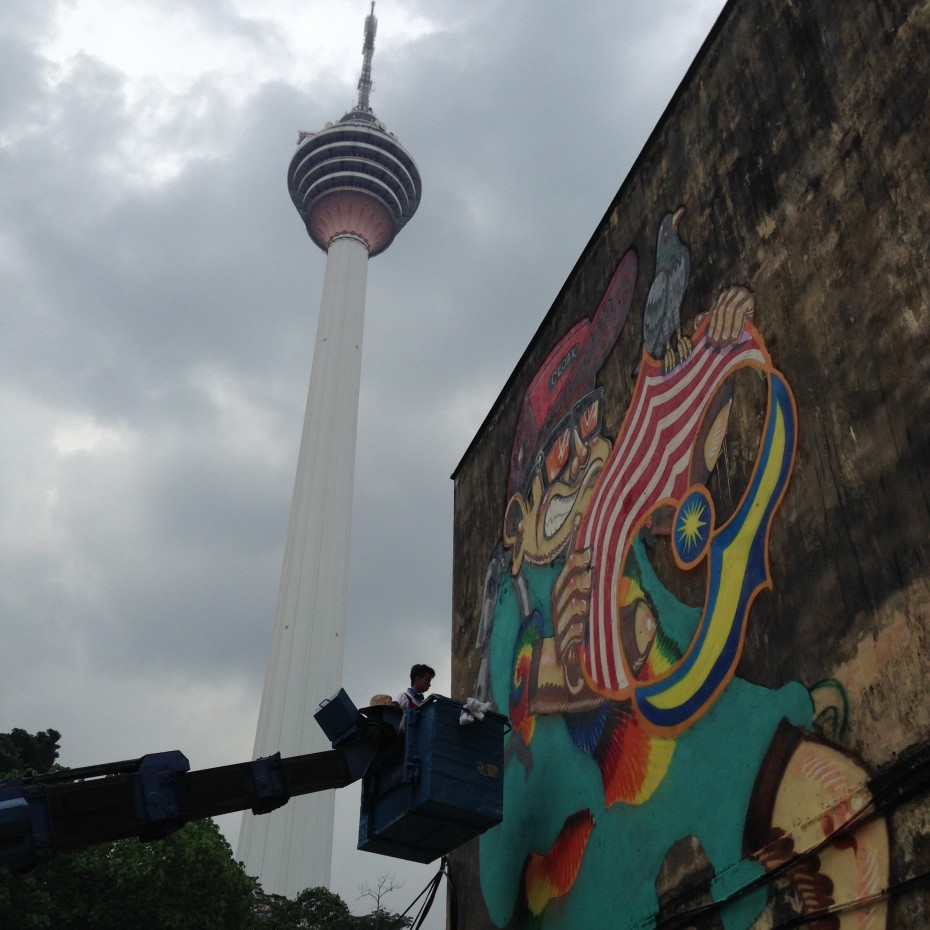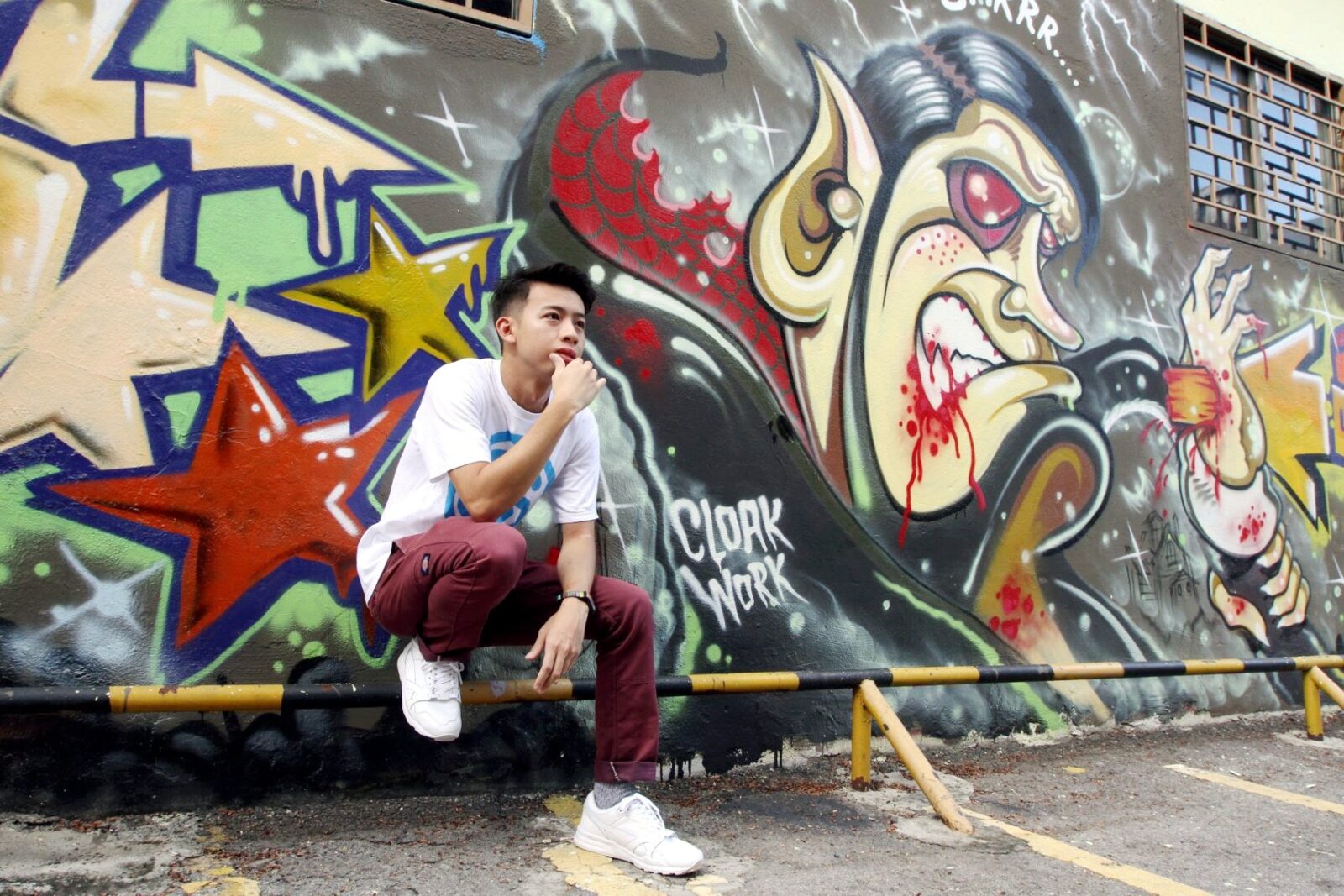FOUR years ago, while passing by Pasar Seni in Kuala Lumpur on the train, illustration student Loo Lok Chern noticed some inspiring graffiti work. That was when he decided he wanted to do something extraordinary with his artistic stills.
Today, Loo, 24, goes by the street name Cloakwork, and has completed numerous graffiti work in KL and overseas, including Singapore, Australia, Japan and Indonesia. And he’s not stopping there.
“I want to inspire people to see everyday things differently and share positive energy through my work,” said Cloakwork, who had his artwork featured at Urbanscapes 2014 in December after winning a design competition organised by R.AGE.
“I want the walls I’m working on to help make the city more exciting, to add some colour to the lives of all those who see it.”

Cloakwork working on his mural for Petronas’ #tanahairku Street Art project along Jalan Raja Chulan, the biggest he has ever worked on.
Cloakwork insists graffiti artists like himself should source for walls that attract a lot of eyeballs, rather than hide their work in secluded corners.
Once they’ve selected a wall, they find out how many artists can contribute to the artwork. A mural would normally take a group of two to five artists (depending on the size), but it’s always a case of the more the merrier.
“We discuss the theme of the mural among ourselves, pick the colours to suit it and sketch out our design before going out to paint it,” Cloakwork said. “We can spend up to five hours working on a mural.”
The local community of graffiti artists work within unwritten rules of respect, according to Cloakwork. That is why you’ll almost never see reputable graffiti artists painting on private properties – unless they’ve been given permission by the owners.
I see graffiti as something for the public, and I hope they accept it.
And when it comes to painting over existing murals, the artists only do it over fading, “out-of-season” pieces.
“It’s part of the game between us artists, especially when you paint at popular spots,” he explained.
It’s a lot of effort for a hobby, but Cloakwork treats it as his way of giving back to the community, which is also why he focuses on character designs, as they’re more relatable to the viewers.
“My motto in life is to give and take. What I get from my day job (as an in-house designer at a local company), I contribute back to society,” he said. “I see graffiti as something for the public, and I hope they accept it.”

Message to the people: Local graffiti artist Loo Lok Chern, 23, better known as Cloakwork, hopes to spread positivity to Malaysians through his art. Photo: SAMUEL ONG/The Star
Doing graffiti is no joke – Cloakwork spends up to RM1,000 every six months on spray paint, and completes at least two murals a month. He gets commissioned occasionally, usually to paint at events, but that’s never a regular source of income.
Thankfully, Cloakwork has seen an increasing appreciation for graffiti within the country. Petronas, for example, funded a graffiti project involving 14 local artists last year to spread patriotism through six huge murals at different locations around KL.
It’s that simple – graffiti is a worldwide language.
“Malaysia is still new to graffiti, and most of our pieces are small. Graffiti artists overseas go all out, painting over whole buildings,” he said. “I was lucky to be involved in the Petronas project, and that allowed me to paint the biggest mural I’ve ever done.”
And yet, Cloakwork is already looking forward to painting bigger murals, and contributing his artwork to different cities around the world.
“It’s a must for me to paint wherever I travel for holidays. Before going on my trip, I research and get in contact with a local artist there. We plan a meetup and he or she will show me the ropes,” he said.
“It’s that simple – graffiti is a worldwide language.”







Leave a reply